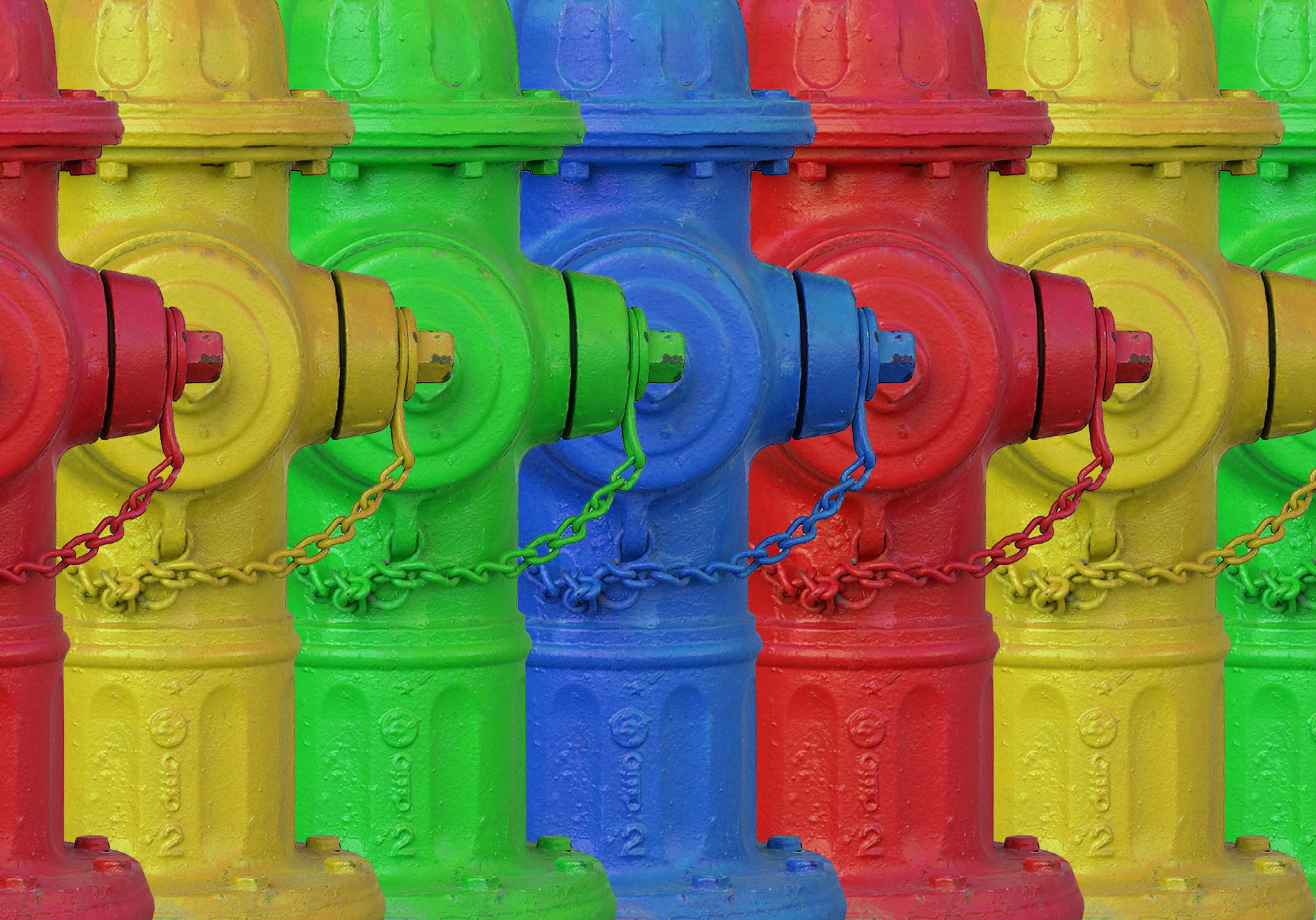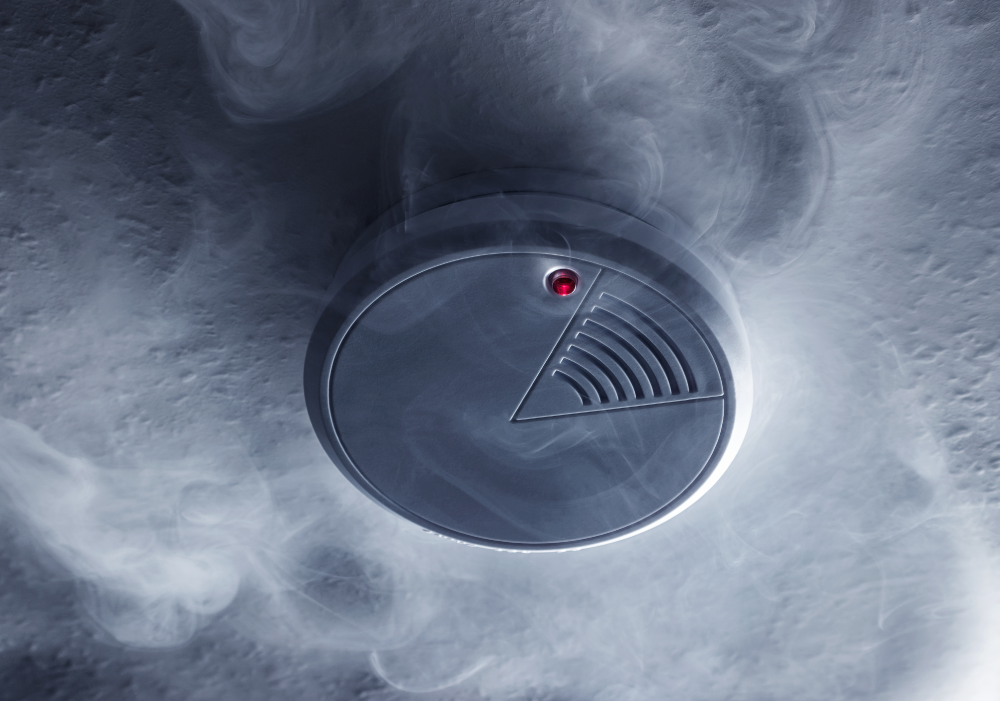When you imagine a fire hydrant, what color comes to mind? Does the color even matter? To the average person, possibly not. But to firefighters, the hydrant’s color is a thing they’re trained to notice.
When responding to a fire, every second counts. That's why the National Fire Protection Association (NFPA) recommends that hydrants be uniformly color-coded to indicate water-flow capabilities, so firefighters can assess their capabilities at a glance.
Before continuing, be sure to stay informed with similar content by signing up for notifications.
What does the color of a fire hydrant say about its capacity?
Per NFPA 291, the body of all public fire hydrants should be chrome yellow, unless another color has already been adopted as a standard for the community. A fire hydrant fresh from the factory is typically this chrome yellow color to make it highly visible.
The color-coding scheme usually comes into play on the tops and nozzle caps, though it may also show up in the color of the hydrant body. We'll show you examples of both types of color coding below. The colors indicate the rated water-flow capacity of that particular hydrant:
- Red indicates a water-flow capacity of fewer than 500 gallons per minute (GPM).
- Orange indicates a water-flow capacity of 500 to 999 GPM.
- Green indicates a water-flow capacity of 1,000 to 1,499 GPM.
- Blue indicates a water-flow capacity of 1,500 or greater GPM.
Based on the color, firefighters can determine the appropriate pump operations for that hydrant, and whether a different hydrant would provide better water flow.
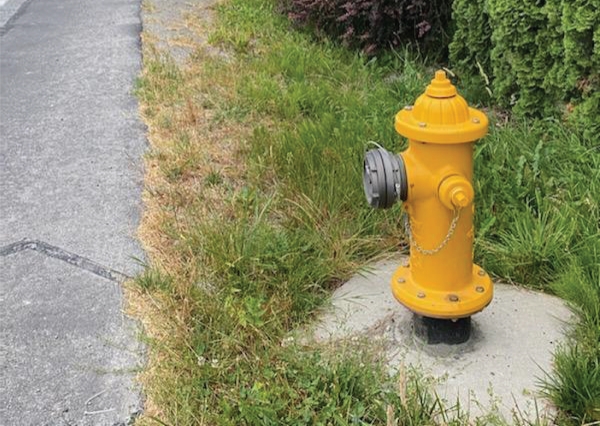 This fire hydrant's factory-standard chrome yellow color doesn't
This fire hydrant's factory-standard chrome yellow color doesn't
give firefighters any information about its water-pumping capacity.
Related:
Guide to Hydrant Flow Testing
What are examples of different color fire hydrants?
Our fire protection analysts have gathered photos from their fieldwork to illustrate what color-coded hydrants look like.
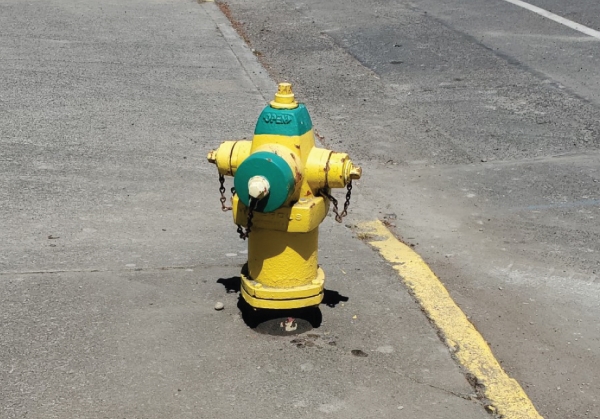 This fire hydrant's green top and nozzle cap indicate its water-flow capacity is
This fire hydrant's green top and nozzle cap indicate its water-flow capacity is
between 1,000 and 1,499 gallons per minute.
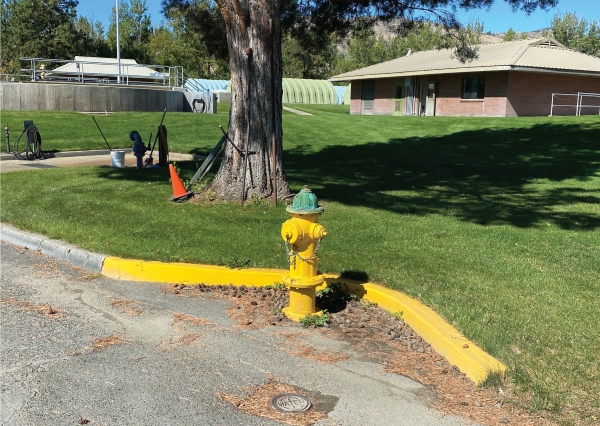 Here's another example of a fire hydrant with a green top and water-flow capacity
Here's another example of a fire hydrant with a green top and water-flow capacity
of between 1,000 and 1,499 gallons per minute.
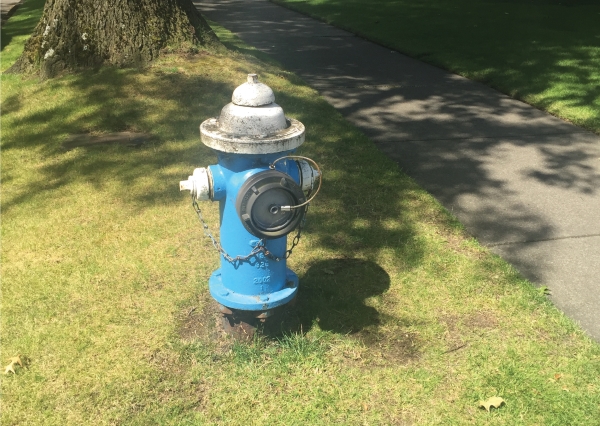 The blue barrel of this fire hydrant means it has a water-flow capacity of
The blue barrel of this fire hydrant means it has a water-flow capacity of
1,500 or greater gallons per minute.
What other marking guidelines are there for fire hydrants?
The NFPA also encourages the use of reflective paint to increase visibility at night. To help firefighters distinguish public hydrants from private, the NFPA suggests private hydrants be painted a different color —preferably red.
Any hydrant with a pressure rating under 20 pounds per square inch should have its rating stenciled in black on the hydrant top.
If a hydrant is temporarily out of service, it should be covered with a black bag or something else that indicates it’s not to be used. Inoperative hydrants should be removed. Again, these recommendations are designed to give firefighters the information they need, quickly and visually.
NFPA 291 is not a law; it’s a guideline. This means not all communities follow the color-coding system. It’s up to each community to determine if and how color-coding will be used. The Washington State Legislature has issued minimum standards for fire hydrants but does not stipulate any color-coding.
Some fire-fighting professionals feel that color-coding is no longer relevant since hydrant information is readily accessible on mobile devices. Others maintain that it’s still necessary for conveying information quickly and effectively. Either way, the practice of color coding fire hydrants remains in use in many places and will likely continue for the foreseeable future.
This post has been updated with new images and fresh content to improve its accuracy and value.




